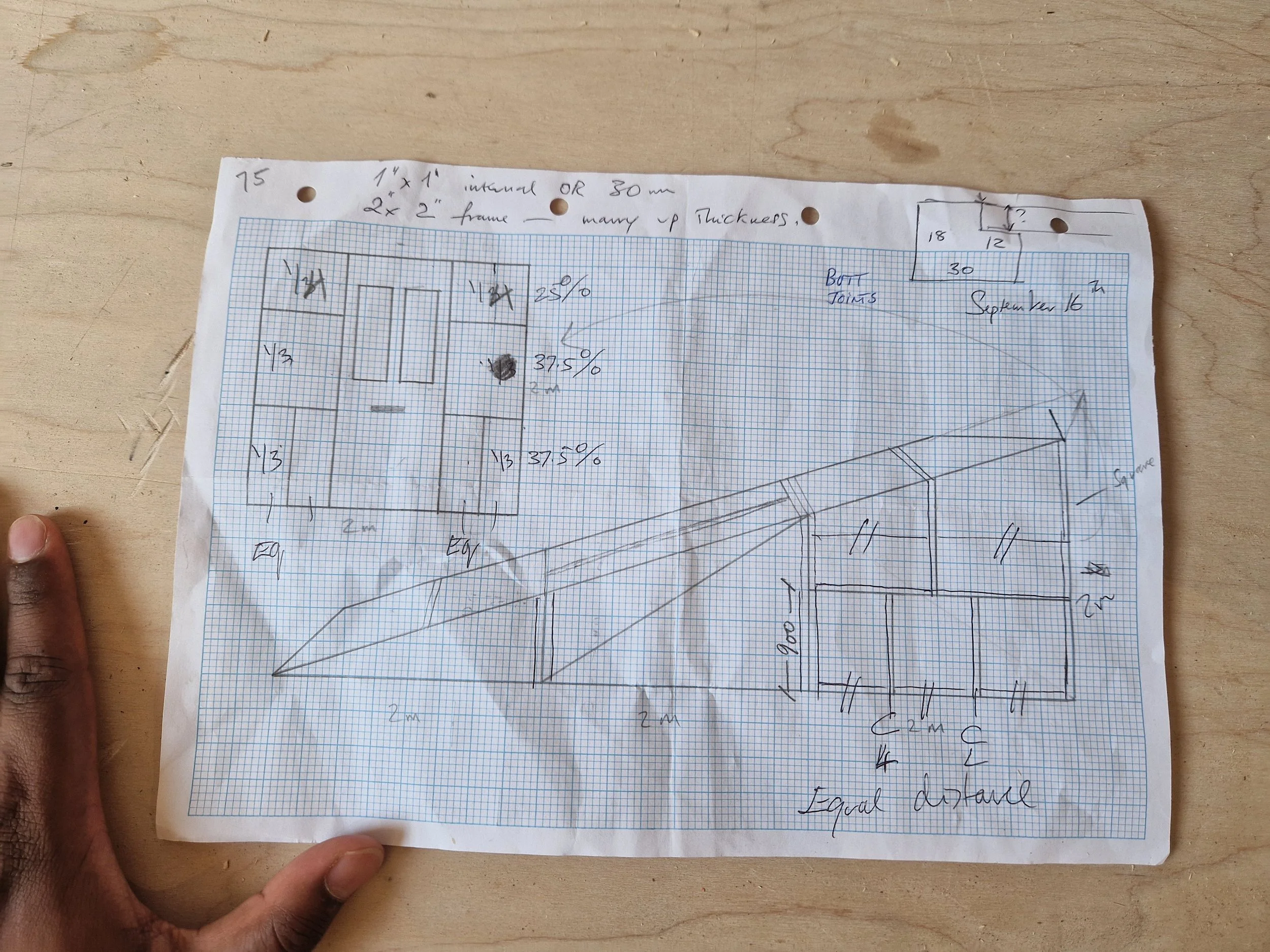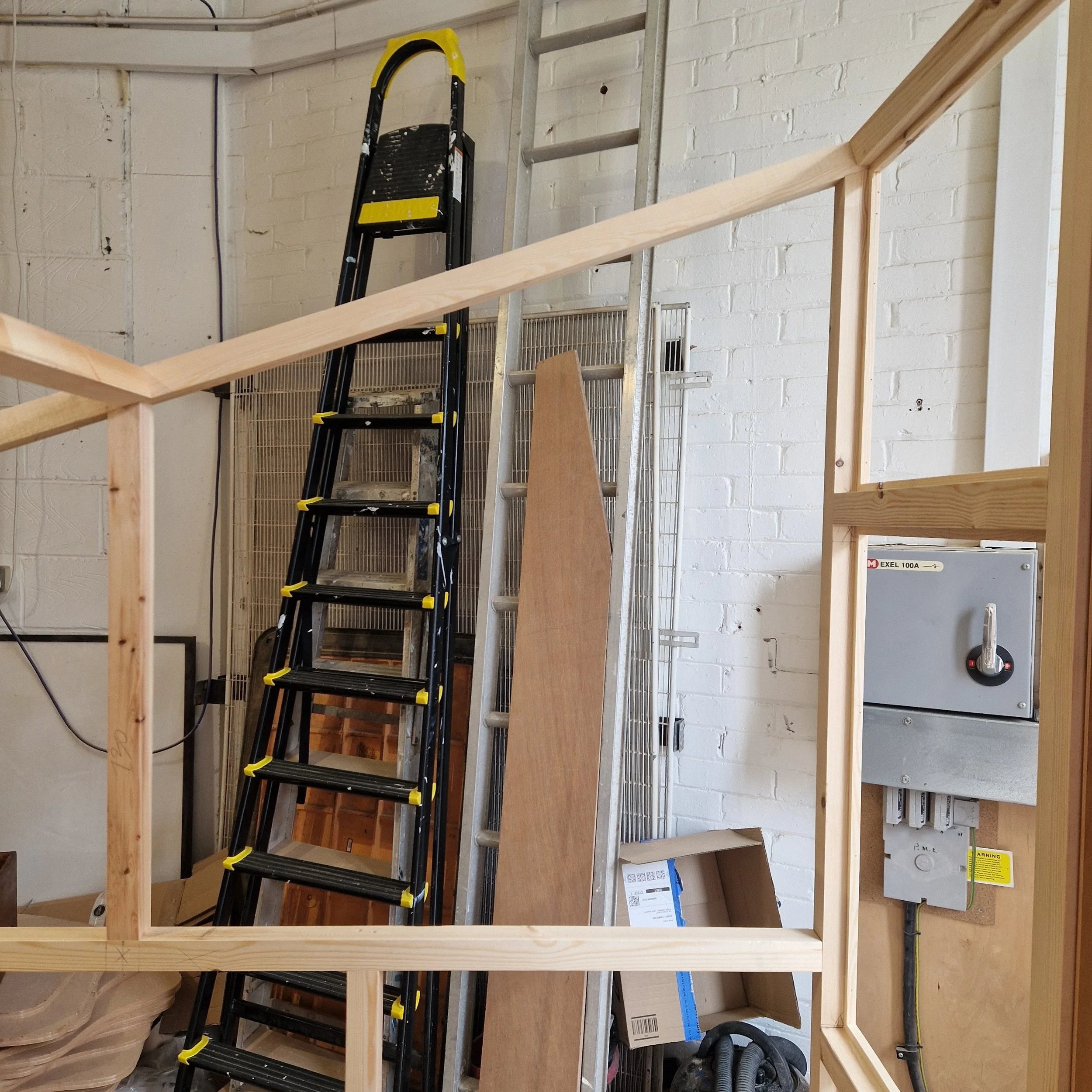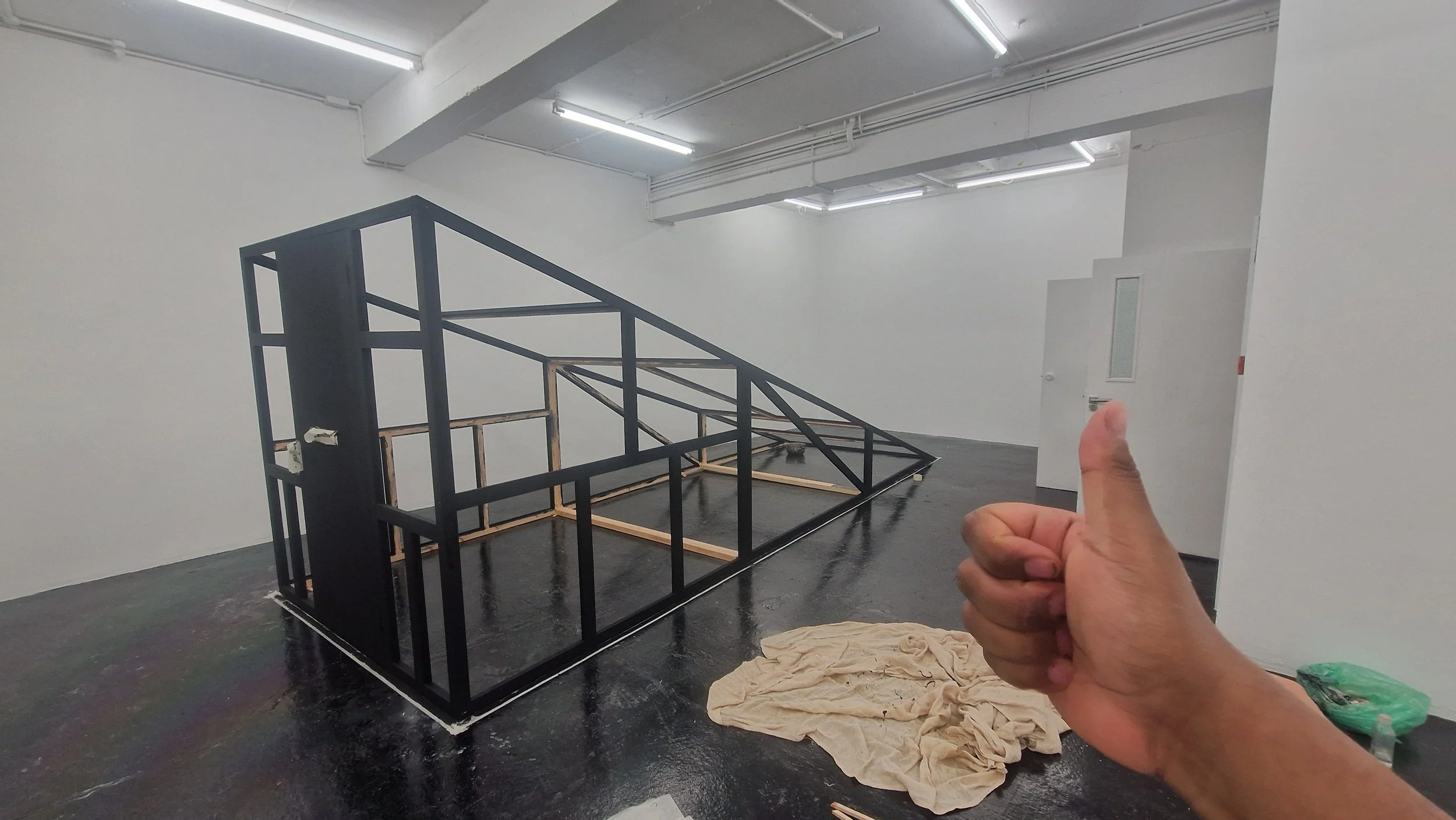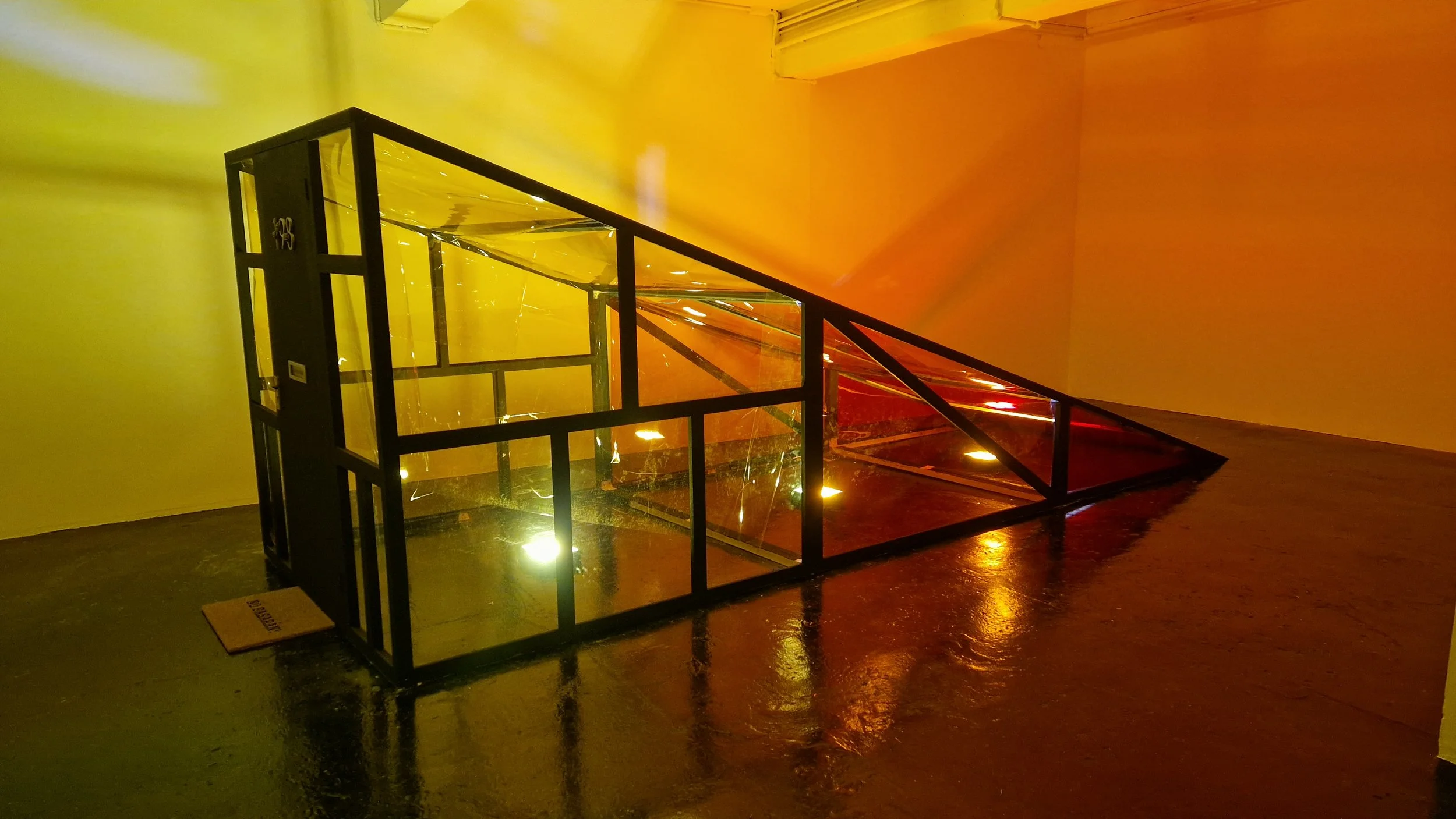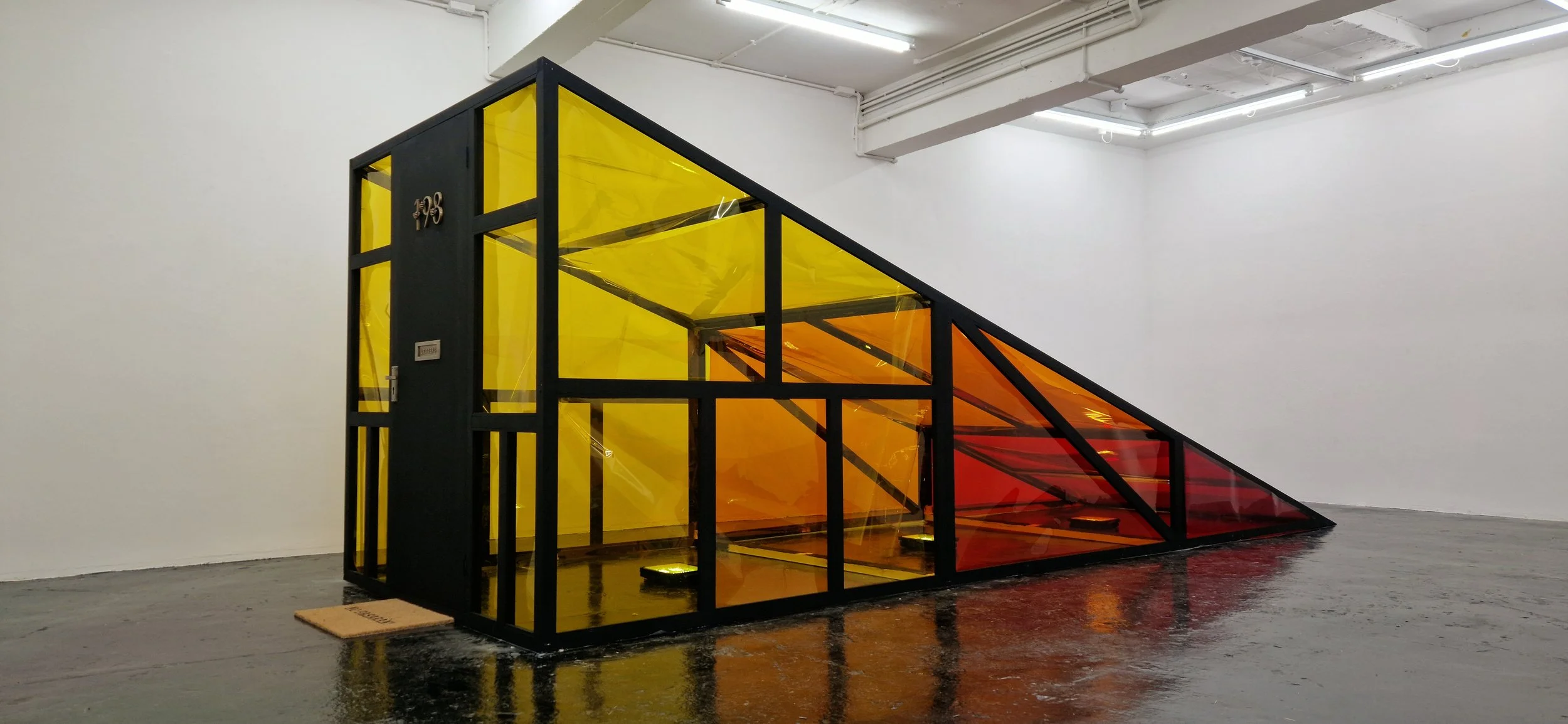THE ILLUMINATED WEDGE OF RESISTANCE
Sculpture with Light and Sound | 6m x 2m x 1.5m
Materials: Pinewood, Gel Light Filters, LEDs, Brass, Audio Poetry
-
"The Illuminated Wedge of Resistance" is a large-scale sculptural installation that uses art as a lens to examine political resistance and global solidarity. The wedge symbolises the act of breaking through both physical and metaphorical barriers created by systemic injustice, political oppression, and social division.
Illuminated from within, the sculpture emits three progressive colours—red, orange, and yellow—representing stages in the emotional journey of resistance. Red conveys the initial anger and defiance against injustice, orange reflects the sustained struggle, and yellow signifies hope and triumph, embodying the vision of a dismantled barrier and a just future.
Comissioned poetry from resistance movements in Kashmir, Palestine, and Sudan is integrated into the wedge, amplifying these voices through sound and creating a multisensory experience that links visitors to global struggles for justice.
-
The wedge’s angular structure and internal illumination create a powerful visual and symbolic presence. Its sharp lines represent the cutting force of resistance, while the closed door at one end highlights the obstacles faced by movements for justice.
Accessible materials like pinewood reflect the grassroots strength of collective resistance, while gel light filters soften and transform the light, symbolising the conversion of harsh realities into hopeful visions. The addition of audio poetry enriches the work’s performative dimension, creating an immersive and interactive experience.
Each poem offers a deeply personal narrative of resistance, providing a balance between the universal and the specific. This multisensory approach turns the wedge into a living emblem of resilience and solidarity.
-
The wedge operates as both a metaphor and an invitation for reflection. Its illuminated progression through red, orange, and yellow mirrors the emotional trajectory of resistance movements, offering a visual representation of their struggle and eventual hope.
The inclusion of poetry elevates the voices of often-marginalised communities, connecting the audience with personal stories of defiance and perseverance. These elements combine to create a universal narrative of interconnected resistance movements across borders.
Visitors interact with the wedge on multiple levels: visually, through its bold form and dynamic lighting; spatially, by physically entering its presence; and emotionally, through the evocative power of sound and light.
-
"The Illuminated Wedge of Resistance" aligns with a tradition of socially engaged art that confronts systemic oppression and amplifies marginalised voices. Drawing inspiration from artists like Ai Weiwei and Theaster Gates, it bridges aesthetic innovation with sociopolitical critique. The integration of poetry from Kashmir, Palestine, and Sudan reflects Walter Mignolo’s concept of "border thinking," reframing resistance as a global, interconnected phenomenon, while engaging with Homi Bhabha's ideas of cultural hybridity to create new spaces of meaning.
The wedge’s use of light resonates with the transformative installations of James Turrell, symbolising resistance’s journey from anger to hope. By collaborating with the International Centre of Justice for Palestinians, the work situates itself within contemporary decolonial and human rights movements.
Through its form, materials, and multisensory experience, the wedge transforms the gallery space into a site of reflection and dialogue. It asserts art’s active role in challenging injustice, fostering solidarity, and connecting audiences to global struggles for liberation.

